Spectrum Summary: Emergence of Swarajists, Socialist Ideas, Revolutionary Activities & New Forces | History for UPSC CSE PDF Download
| Table of contents |

|
| Introduction |

|
| Swarajists and No-Changers |

|
| Emergence of New Forces: Socialistic Ideas, Youth Power, Trade Unionism |

|
| Revolutionary Activity During the 1920s |

|
Introduction
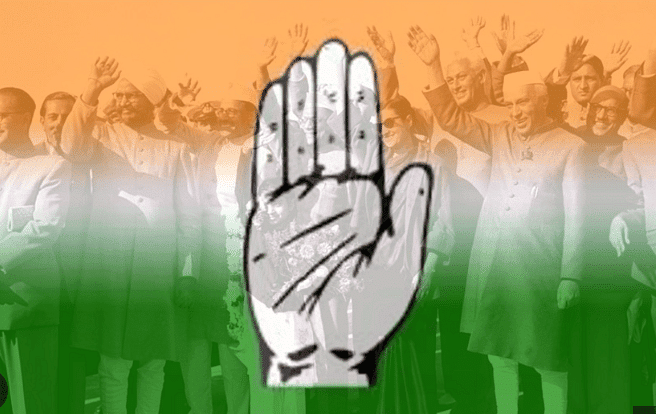 Logo of Indian National Congress
Logo of Indian National Congress
Swarajists and No-Changers
Swarajists
- Led by C R Das, Motilal Nehru, and Ajmal Khan, a faction emerged with the objective of terminating the boycott of legislative councils.
- Their primary goal was to utilize these councils as platforms for political struggle, with the dual strategy of either reforming the councils or disrupting proceedings if governmental responses proved inadequate.
- The emphasis of this group was solely on engaging in political activism within the councils, devoid of any intention to gradually transform colonial rule.
- The Swarajists, in contrast, endorsed and supported the idea of active participation in legislative councils
No Changers
- The 'No-changers' opposed council entry, preferring to concentrate on constructive efforts while upholding the boycott and noncooperation.
- They advocated for a silent resumption of the suspended civil disobedience program.
- Led by Vallabhbhai Patel, Rajendra Prasad, C. Rajagopalachari, and M.A. Ansari, the 'No-changers' constituted a distinct school of thought.
Genesis of Congress-Khilafat Swarajya Party
- After Gandhi's arrest in March 1922, nationalist ranks experienced disintegration, disorganization, and demoralization.
- A debate ensued among Congress members regarding the transition period, known as the passive phase of the movement.
- Advocates for entry into legislative councils were termed "Swarajists."
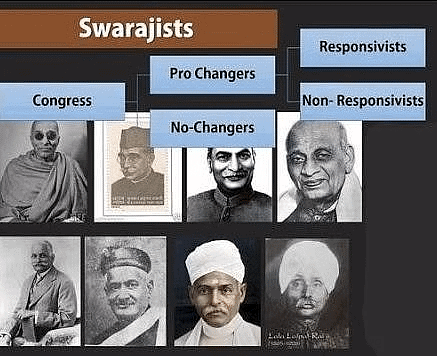
- The opposing school of thought, led by C. Rajagopalachari, Vallabhbhai Patel, Rajendra Prasad, and M.A. Ansari, was labeled the 'No-changers.'
- 'No-changers' opposed council entry, emphasized constructive work, supported the continuation of boycott and non-cooperation, and quietly prepared for the resumption of the suspended civil disobedience program.
- The Congress-Khilafat Swarajya Party, or Swarajist Party, was formed with C.R. Das as president and Motilal Nehru as one of the secretaries.
Swarajists' Arguments
- The Swarajists argued for their inclusion in the councils for a variety of reasons.
- Entering the councils would not undermine the noncooperation agenda; rather, it would be like continuing the movement on a different front.
- Council work would assist to energise the populace and maintain their morale during a period of political uncertainty. The presence of nationalists would dissuade the government from packing the councils with unsavoury characters who could be used to legitimise government actions.
- The objective was not to use the councils as vehicles for the progressive transition of colonial administration, but they may be used as a venue for political confrontation.
No-Changers' Arguments
- The 'No-Changers' contended that engaging in parliamentary activities would result in neglecting constructive efforts, diminishing revolutionary fervor, and fostering political corruption.
Agree to Disagree
- Both sides also realized the significance of putting up a united front to get a mass movement to force the government to introduce reforms, and both sides accepted the necessity of Gandhi’s leadership of a united nationalist front.
- Keeping these factors in mind, a compromise was reached at a meeting in Delhi in September 1923. The elections to the newly constituted Central Legislative Assembly and to provincial assemblies were to be held in November 1923.
The Swarajist Manifesto for Elections
- The Swarajist manifesto, released in October 1923, strongly opposed imperialism, asserting that British governance in India served their own interests.
- It viewed proclaimed reforms as a pretense for furthering British objectives and perpetuating the exploitation of India's resources while keeping Indians subservient.
- Swarajists aimed to advocate self-government in councils, resorting to consistent obstruction if the demand was rejected. The strategy aimed to create deadlocks within councils, making effective governance impossible.
Gandhi’s Attitude
- Gandhi was initially opposed to the Swarajist proposal of council entry. But after his release from prison on health grounds in February 1924, he gradually moved towards a reconciliation with the Swarajists.
- He felt public opposition to the program of council entry would be counterproductive.
- In the November 1923 elections, the Swarajists had managed to win 42 out of 141 elected seats and a clear majority in the provincial assembly of Central Provinces.
- There was a government crackdown on revolutionary terrorists and the Swarajists towards the end of 1924.
- Both sides came to an agreement in 1924
Swarajist Activity in Councils
- Swarajists lost the support of many Muslims when the party did not support the tenants' cause against the zamindars in Bengal.
- Responsivity among Swarajists—Lala Lajpat Rai, Madan Mohan Malaviya, and N.C. Kelkar— advocated cooperation with the government and holding of office wherever possible.
- Thus, the main leadership of the Swarajist Party reiterated faith in mass civil disobedience and withdrew from legislatures in March 1926.
- In 1930, the Swarajists finally walked out as a result of the Lahore Congress resolution on purna swaraj and the beginning of the Civil Disobedience Movement.
Achievements
- Coalition partners, through strategic voting, consistently overruled the government, including matters related to budgetary grants, and successfully passed adjournment motions.
- They used impactful speeches to advocate for self-government, civil liberties, and industrialization.
- In 1925, Vithalbhai Patel was elected as the speaker of the Central Legislative Assembly.
 Vithalbhai Patel
Vithalbhai Patel
- A significant accomplishment was the defeat of the Public Safety Bill in 1928, designed to grant the government the authority to deport undesirable and subversive foreigners.
- Through their activities, they filled a political vacuum during a period of national movement resurgence.
- Their efforts revealed the flaws in the Montford scheme and demonstrated the creative utilization of councils in advancing political goals.
Drawbacks
- Swarajists lacked a coordinated approach to align their legislative activism with mass movements outside, relying solely on newspaper reporting for public communication.
- The obstructionist strategy they employed had inherent limitations, hindering its effectiveness.
- Conflict in ideas prevented a sustained collaboration with coalition partners, limiting their progress.
- Inability to resist the allure of power and office perks contributed to their shortcomings.
- They failed to advocate for the peasants' cause in Bengal, leading to a loss of support among Muslim members who were pro-peasant.
Constructive Work by No-Changers
- The No-Changers devoted themselves to constructive work that connected them to the different sections of the masses.
- Ashrams sprang up where young men and women worked among tribals and lower castes and popularised the use of charkha and khadi.
 Gandhi Ji with Charkha
Gandhi Ji with Charkha
- National schools and colleges were set up where students were trained in a noncolonial ideological framework.
- Significant work was done for Hindu-Muslim unity, removing untouchability, a boycott of foreign cloth and liquor, and for flood relief.
- The constructive workers served as the backbone of civil disobedience as active organizers.
A Critique of Constructive Work
- National education benefited the urban lower middle classes and the rich peasants only.
- The popularisation of khadi was an uphill task since it was costlier than the imported cloth.
Muddiman Committee (1924)
- In response to the demand of Indian leaders and in light of the resolution adopted by the Swaraj Party in the early 1920s, the British Government established a committee headed by Sir Alexander Muddinman.
- It also advocated for the establishment of a Royal Commission.
- To meet the demand of Indian leaders and in light of the resolution adopted by the Swaraj Party in the early 1920s, the British government established the Muddinman Committee, led by Sir Alexander Muddinman.
- Apart from British members, the Committee had four Indian members.
Committee members who were Indian
- Sir Sivaswami Aiyar
- Dr. R P Paranjape
- Sir Tejbahadur Sapru
- Mohammad Ali Jinnah
Emergence of New Forces: Socialistic Ideas, Youth Power, Trade Unionism
Spread of Marxist and Socialist Ideas
- Young nationalists, inspired by Marx and socialist thinkers, turned away from Gandhian ideas and advocated radical solutions following the Soviet Revolution.
- They critiqued both Swarajists and No-Changers and pushed for a consistent anti-imperialist stance, advocating for "purna swaraj" or complete independence.
- Influenced by a consciousness of social justice, they emphasized the need to blend nationalism and anti-imperialism while addressing internal class oppression by capitalists and landlords.
- The Communist Party of India (CPI) was established in 1920 in Tashkent by figures like M.N. Roy and Abani Mukherji after the second Congress of Comintern.
- M.N. Roy was the first to lead Comintern, and in 1924, communists like Shripad Amrit Dange and Muzaffar Ahmed faced imprisonment in the Kanpur Bolshevik Conspiracy Case.
- The formal foundation of the CPI took place in 1925 during the Indian Communist Conference in Kanpur.
- A government crackdown in 1929 resulted in the Meerut conspiracy case, leading to the arrest and trial of 31 prominent communists, trade unionists, and left-wing leaders.
Activism of Indian Youth
- Nationwide, student leagues were forming, and conferences for students were taking place. In 1928, Jawaharlal Nehru chaired the All Bengal Students' Conference.
Peasants’ Agitations
- Peasant agitations took place in the Rampa region of Andhra, in Rajasthan, in ryotwari areas of Bombay and Madras. In Gujarat, the Bardoli Satyagraha was led by Vallabhbhai Patel (1928).
 Bardoli Satyagraha
Bardoli Satyagraha
Growth of Trade Unionism
- The All India Trade Union Congress (AITUC), established in 1920, spearheaded the trade union movement.
- Lala Lajpat Rai served as its inaugural president, and Dewan Chaman Lai was the first general secretary.
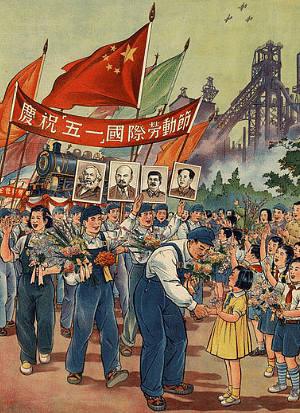 May Day Celebration
May Day Celebration
- Noteworthy strikes in the 1920s included those at Kharagpur Railway Workshops, Tata Iron and Steel Works (Jamshedpur), Bombay Textile Mills (involving 150,000 workers lasting for 5 months), and Buckingham Carnatic Mills.
- In 1923, the inaugural celebration of May Day occurred in India, specifically in Madras.
Caste Movements
These movements could be divisive, conservative, and at times potentially radical, and included:
- Justice Party (Madras)
- Self-respect movement (1925) under “Periyar”—E.V. Ramaswamy Naicker (Madras)
- Satyashodhak activists in Satara (Maharashtra)
- Bhaskar Rao Jadhav (Maharashtra)
 Bhaskar Rao Jadhav
Bhaskar Rao Jadhav
- Mahars under Ambedkar (Maharashtra)
- Radical Ezhavas under K. Aiyappan and C. Kesavan in Kerala
- Yadavs in Bihar for improvement in social status Unionist Party under Fazl-i-Hussain (Punjab).
Revolutionary Activity with a Turn towards Socialism
- This line was adopted by those dissatisfied with the nationalist strategy of the political struggle with its emphasis on nonviolence.
- Hindustan Republican Association (H.R.A.)—in Punjab-UP-Bihar
- Yugantar, Anushilan groups and later Chittagong Revolt Group under Surya Sen—in Bengal.
Revolutionary Activity During the 1920s
Why Attraction for Revolutionary Activity after Non-Cooperation Movement- Two separate strands of revolutionary groups emerged during this period—one operating in Punjab-UP-Bihar and the other in Bengal.
Major Influences
- The upsurge of working-class trade unionism after the War; the revolutionaries wanted to harness the revolutionary potential of the new emergent class for nationalist revolution.
- Russian Revolution (1917) and the success of the young Soviet state in consolidating itself.
 Russian Revolution
Russian Revolution
- Newly sprouting communist groups with their emphasis on Marxism, socialism, and the proletariat.
- Journals publishing memoirs and articles extolling the self-sacrifice of revolutionaries, such as Atmasakti, Sarathi, and Bijou.
- Novels and books such as Bandi Jiwan by Sachin Sanyal and Pather Dabi by Sharatchandra Chatterjee (a government ban only enhanced its popularity).
In Punjab-United Provinces-Bihar
The dominant force in revolutionary activity in the region was the Hindustan Republican Association/Army (HRA), later renamed the Hindustan Socialist Republican Association (HSRA). Established in October 1924 in Kanpur by Ramprasad Bismil, Jogesh Chandra Chatterjee, and Sachin Sanyal, its goal was to organize an armed revolution to overthrow the colonial government and establish the Federal Republic of the United States of India with adult franchise as a core principle.
A. Kakori Robbery (August 1925)
The pivotal undertaking of the HRA was the Kakori robbery, where they intercepted the 8-Down train near Lucknow at the obscure village of Kakori, looting its official railway cash. The government's response to the Kakori robbery resulted in numerous arrests, with 17 individuals imprisoned, four sentenced to life transportation, and four—Bismil, Ashfaqullah, Roshan Singh, and Rajendra Lahiri—meeting the gallows. Kakori marked a setback for the HRA.
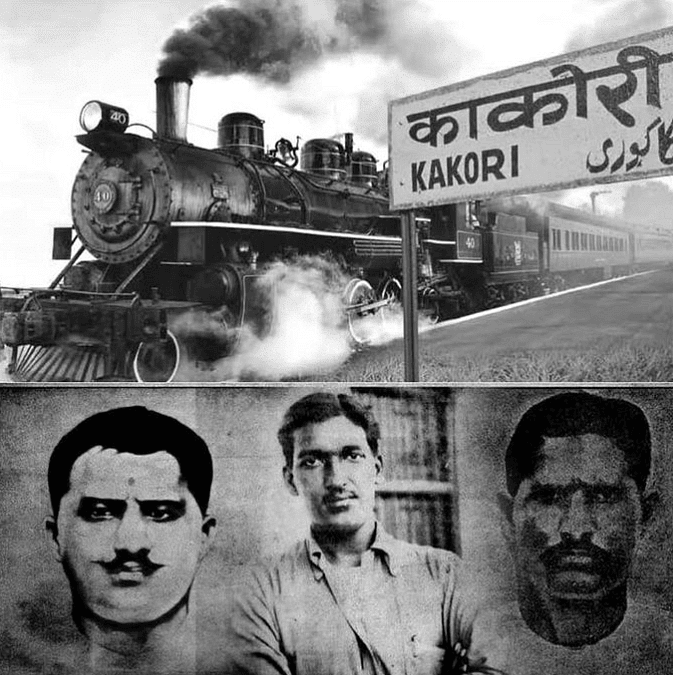 Kakori Train Conspiracy
Kakori Train Conspiracy
B. The HSRA
- Younger revolutionaries, inspired by socialist ideas, aimed to overcome the Kakori setback.
- Historic meeting held in the ruins of Ferozshah Kotla in Delhi (September 1928) to reorganize the Hindustan Republic Association (HRA).
- Under the leadership of Chandra Shekhar Azad, the HRA was renamed the Hindustan Socialist Republican Association (HSRA).
- Participants included Bhagat Singh, Sukhdev, Bhagwaticharan Vohra from Punjab, and Bejoy Kumar Sinha, Shiv Verma, and Jaidev Kapur from the United Provinces.
- HSRA decided to operate under a collective leadership.
- Officially adopted socialism as its goal.
C. Saunders’ Murder (Lahore, December 1928)
As the HSRA revolutionaries moved away from individual heroic actions, the death of Sher-i-Punjab Lala Lajpat Rai during a lathi-charge on an anti-Simon Commission procession (October 1928) prompted a return to individual assassination. Bhagat Singh, Azad, and Rajguru shot dead Saunders, the police official responsible for the lathicharge in Lahore. Justifying the assassination, they expressed that the murder of a leader respected by millions at the hands of an ordinary police officer was an insult to the nation. They considered it the duty of young men in India to eliminate this injustice, regretting the necessity to kill but emphasizing the eradication of an inhuman and
unjust order.
D. Bomb in the Central Legislative Assembly (April 1929)
The HSRA leadership decided to communicate their revised objectives and the imperative for a mass revolution. Bhagat Singh and Batukeshwar Dutt were tasked with throwing a bomb in the Central Legislative Assembly on April 8, 1929, protesting the Public Safety Bill and Trade Disputes Bill, which sought to restrict the civil liberties of citizens and workers. The intentionally inert bombs were designed to draw attention and "make the deaf hear." The primary aim was to purposefully get arrested, strategically using the trial court as a platform for propaganda, aiming to familiarize people with their movement and ideology.
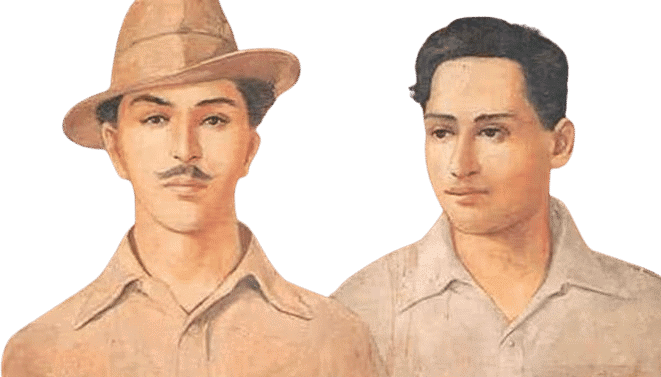 Bhagat Singh and Batukeshwar Dutt
Bhagat Singh and Batukeshwar Dutt
E. Action against the Revolutionaries
- Bhagat Singh, Sukhdev, and Rajguru faced trial in the Lahore conspiracy case; other revolutionaries were tried in various cases.
- In jail, these activists protested against harsh conditions through fasting, demanding fair treatment as political prisoners.
- Jatin Das became the first martyr on the 64th day of his fast.
- Congress leaders organized the defense for these young revolutionaries, elevating Bhagat Singh to a household name.
- In December 1929, Azad was involved in a plot to blow up Viceroy Irwin's train.
- Throughout 1930, a series of violent incidents occurred in Punjab and towns of the United Provinces, with 26 incidents in Punjab alone.
- Azad died in a police encounter in a park in Allahabad in February 1931.
- Bhagat Singh, Sukhdev, and Rajguru were executed on March 23, 1931.
In Bengal
- Surya Sen, a participant in the Non-Cooperation Movement, later served as a teacher in Chittagong. Imprisoned from 1926 to 1928, he continued in Congress, becoming the secretary of the Chittagong District Congress Committee.
- Emphasizing "Humanism" for revolutionaries, he expressed a love for poetry and admiration for Tagore and Qazi Nazrul Islam.
- In 1930, Surya Sen and associates organized an armed rebellion, planning to occupy Chittagong armouries, seize arms, disrupt communication, and cut the railway link with Bengal.
- The April 1930 Chittagong raid involved 65 activists from the Indian Republican Army—Chittagong Branch. Sen hoisted the national flag, proclaimed a provisional revolutionary government, and dispersed into villages. Subsequent raids targeted government installations.
- Arrested in February 1933, Surya Sen was hanged in January 1934. The Chittagong raid's impact endured, inspiring revolutionary-minded youth and drawing recruits to the revolutionary groups.
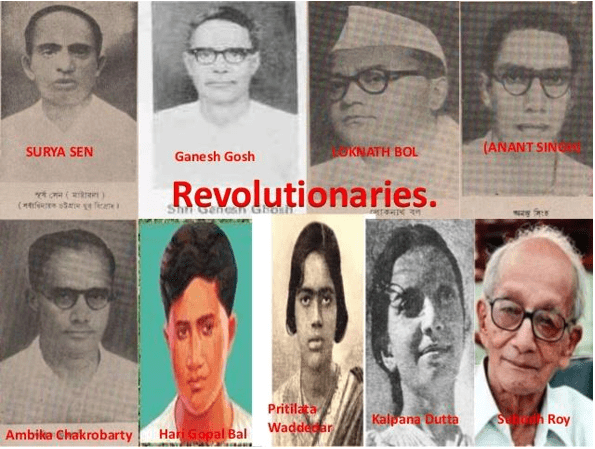 Chittagong Revolutionaries
Chittagong RevolutionariesAspects of the New Phase of the Revolutionary Movement in Bengal-Some noteworthy aspects were as follows.
- There was large-scale participation of young women especially under Surya Sen. Prominent women revolutionaries in Bengal during this phase included Pritilata Waddedar, who died conducting a raid; Kalpana Dutt who was arrested and tried along with Surya Sen and given a life sentence; Santi Ghosh and Suniti Chandheri, schoolgirls of Comilla, who shot dead the district magistrate. (December 1931); and Bina Das who fired point-blank at the governor while receiving her degree at the convocation (February 1932).
- There was an emphasis on group action aimed at organs of the colonial State, instead of individual action. The objective was to set an example before the youth and to demoralize the bureaucracy.
- Some of the earlier tendency towards Hindu religiosity was shed, and there were no more rituals like oath-taking and this facilitated participation by Muslims. Surya Sen had Muslims such as Satar, Mir Ahmed, Fakir Ahmed Mian, and Tunu Mian in his group.
- There were some drawbacks too:(i) The movement retained some conservative elements.(ii) It failed to evolve broader socio-economic goals.(iii) Those working with Swarajists failed to support the cause of Muslim peasantry against zamindars in Bengal.
Question for Spectrum Summary: Emergence of Swarajists, Socialist Ideas, Revolutionary Activities & New ForcesTry yourself:What was the main objective of the revolution according to Bhagat Singh?View SolutionOfficial Reaction
- There was panic at first and then severe government repression.
- Armed with 20 repressive Acts, the government let loose the police on the revolutionaries.
Ideological Rethinking
- A real breakthrough was made by Bhagat Singh and his comrades in terms of revolutionary ideology, forms of revolutionary struggle, and the goals of the revolution.
- A famous statement of the revolutionary position is contained in the book The Philosophy of the Bomb written by Bhagwaticharan Vohra. In other words, the revolution could only be 'By the masses, for the masses”.
- That is why Bhagat Singh helped establish the Punjab Naujawan Bharat Sabha (1926) as an open wing of revolutionaries to carry out political work
Redefining Revolution
- Revolution was no longer equated with militancy and violence. Its objective was to be national liberation
- Bhagat Singh said in the court, “Revolution does not necessarily involve sanguinary strife, nor is there a place in it for personal vendetta. It is not the cult of bomb and pistol. By revolution we mean the present order of things, which is based on manifest injustice, must change.”
- He defined socialism scientifically as the abolition of capitalism and class domination.
|
210 videos|855 docs|219 tests
|
FAQs on Spectrum Summary: Emergence of Swarajists, Socialist Ideas, Revolutionary Activities & New Forces - History for UPSC CSE
| 1. What were the Swarajists and No-Changers? |  |
| 2. What were the socialistic ideas that emerged during this period? |  |
| 3. How did youth power contribute to the revolutionary activity during the 1920s? |  |
| 4. What role did trade unionism play during this period? |  |
| 5. How did the emergence of new forces impact the Indian freedom struggle during the 1920s? |  |





















